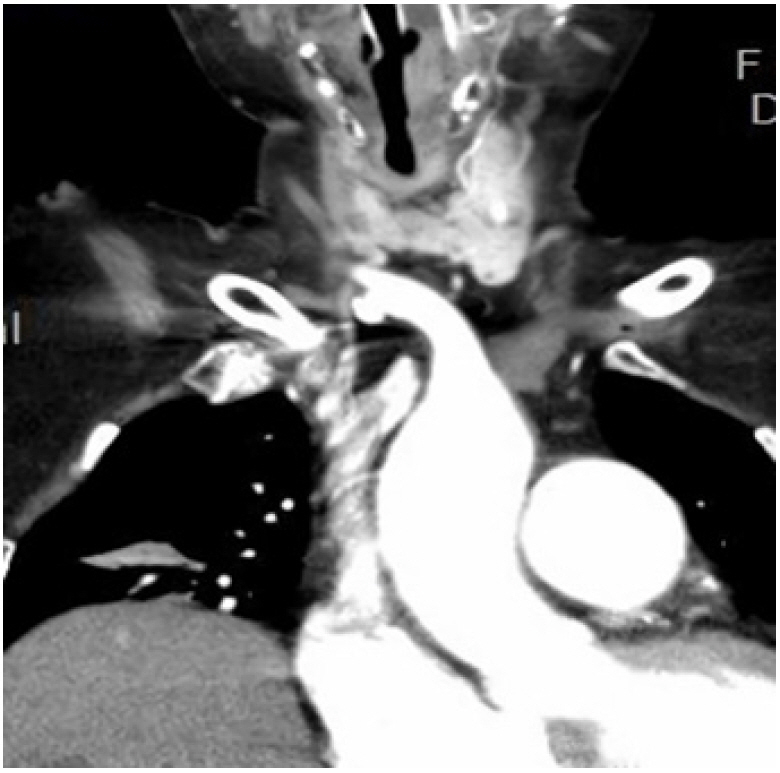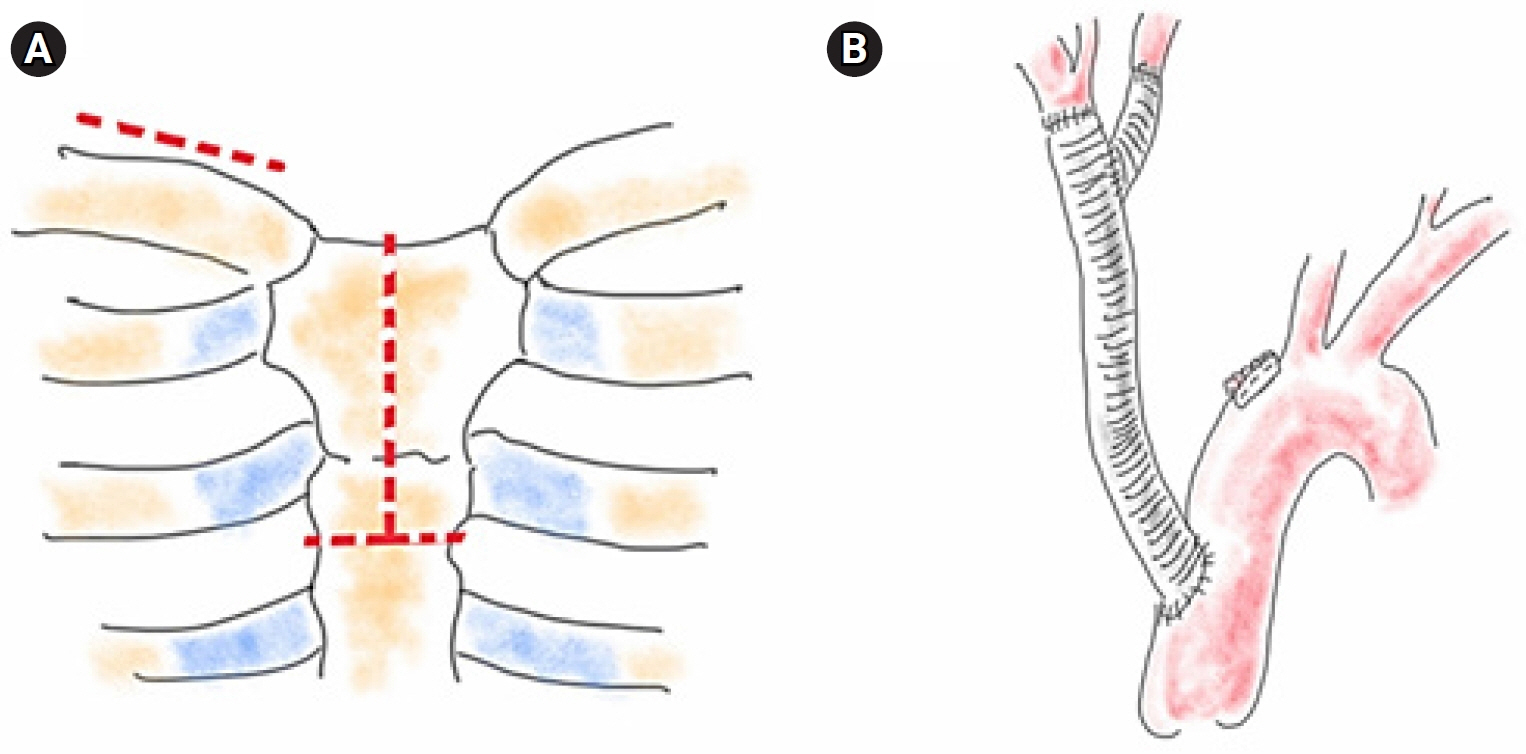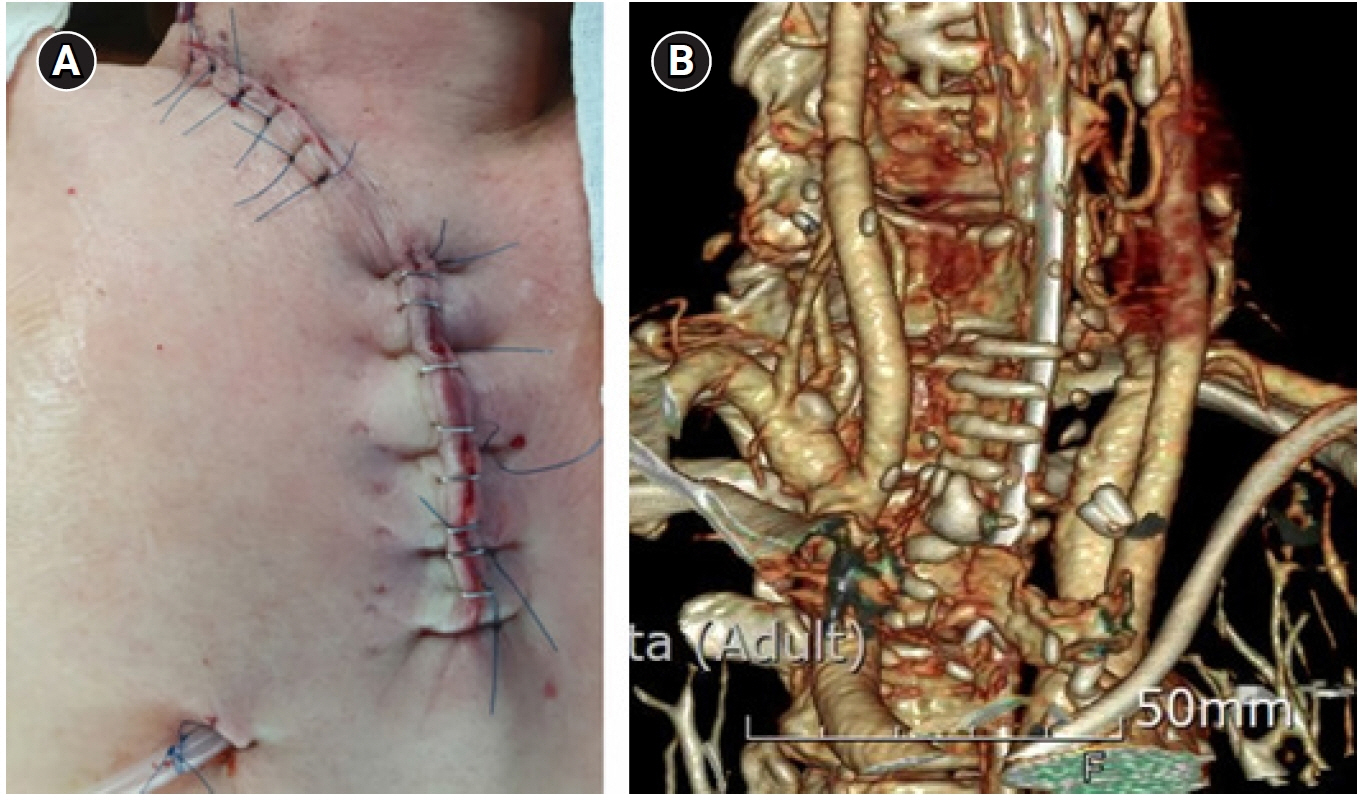Kosin Med J.
2022 Jun;37(2):169-172. 10.7180/kmj.21.046.
Tracheostomy with aortic debranching: a case report
- Affiliations
-
- 1Department of Thoracic and Cardiovascular Surgery, Daejeon Eulji University Hospital, Eulji University School of Medicine, Daejeon, Korea
- 2Department of Thoracic and Cardiovascular Surgery, Kosin University Gospel Hospital, Kosin University College of Medicine, Busan, Korea
- KMID: 2532048
- DOI: http://doi.org/10.7180/kmj.21.046
Abstract
- Percutaneous dilatational tracheostomy (PDT) is preferred over conventional surgical tracheostomy for prolonged airway protection and mechanical ventilation. However, despite its advantages, severe PDT-related complications have been reported, including catastrophic hemorrhage from common carotid artery laceration and innominate artery pseudo-aneurysm. PDT can typically be applied to the trachea, which is the focal point for the transverse course of great vessels (e.g., the anomalous brachiocephalic trunk, which overlaps with the targeted lesion anteriorly); therefore, to improve patient outcomes, an alternative method using aortic debranching may be considered.
Keyword
Figure
Reference
-
References
1. Brahmbhatt PA, Modi FD, Roy TM, Byrd RP Jr. Common carotid artery laceration and innominate artery pseudo-aneurysm following a percutaneous dilatational tracheostomy attempt. Respir Care. 2014; 59:e153–5.
Article2. Sharma NA, Garud RS. Dangerous course of the brachiocephalic trunk and variations of arteries in the cervical region: a cadaveric case report. Eur J Anat. 2012; 16:74–8.3. Upadhyaya PK, Bertellotti R, Laeeq A, Sugimoto J. Beware of the aberrant innominate artery. Ann Thorac Surg. 2008; 85:653–4.
Article4. Muhammad JK, Major E, Wood A, Patton DW. Percutaneous dilatational tracheostomy: haemorrhagic complications and the vascular anatomy of the anterior neck: a review based on 497 cases. Int J Oral Maxillofac Surg. 2000; 29:217–22.
Article
- Full Text Links
- Actions
-
Cited
- CITED
-
- Close
- Share
- Similar articles
-
- Visceral Debranching Thoracic Endovascular Aneurysm Repair for Chronic Dissecting Thoracoabdominal Aortic Aneurysm
- Hybrid Procedure for Aortic Arch Repair: Arch Vessels Debranching with Supraaortic Revascularization Followed by Endovascular Aortic Stent Grafting
- Acute Thrombotic Occlusion of Left Internal Jugular Vein Compressed by Bypass Graft for Thoracic Endovascular Aortic Repair Debranching Procedure
- Hybrid Repair of Suprarenal Abdominal Aortic Aneurysm: Antegrade Debranching with Endovascular Aneurysm Repair
- Hybrid Endovascular Repair of Thoracoabdominal Aortic Aneurysm Using Visceral Debranching Technique: 2 case reports




